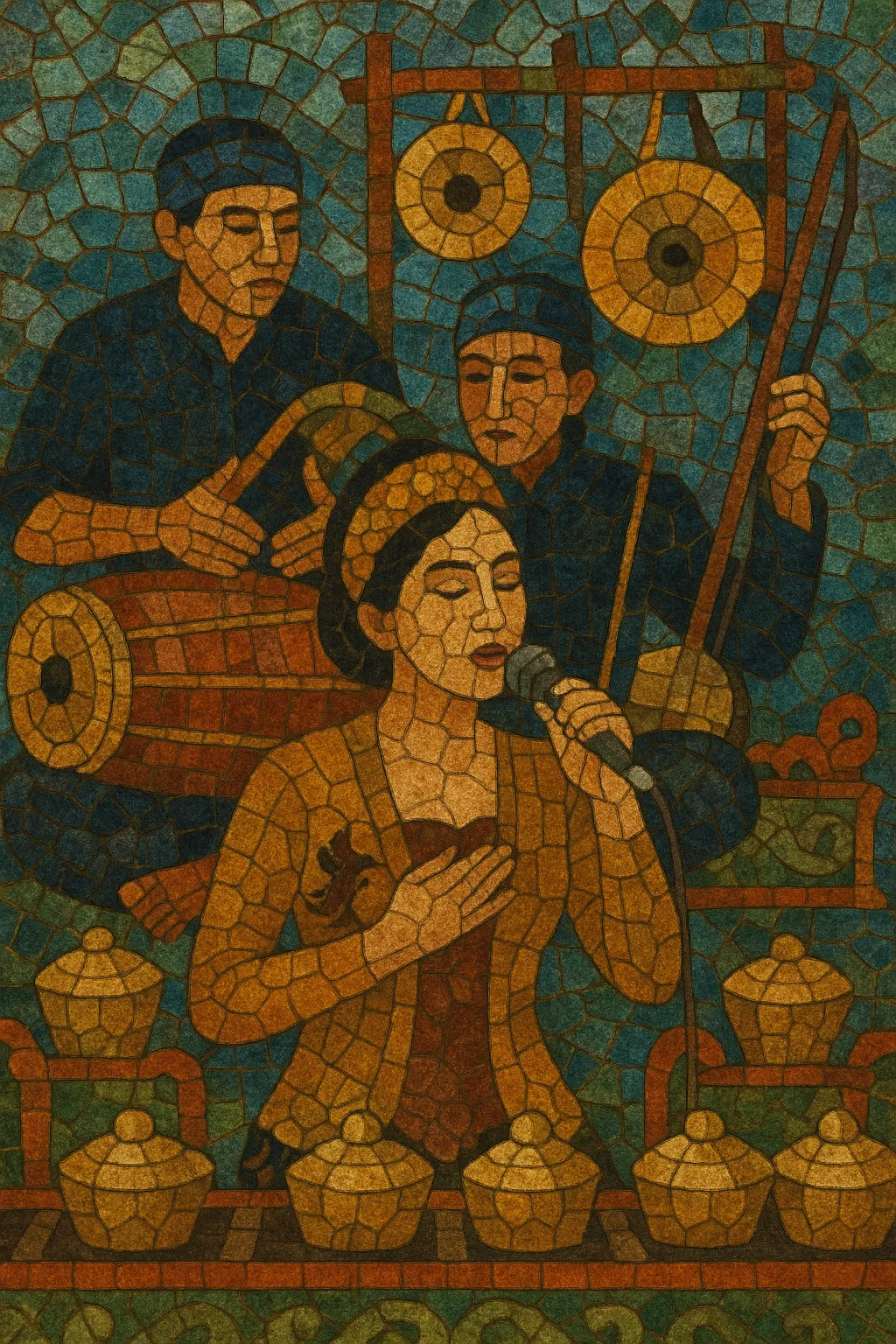Kliningan is a social-entertainment style of Sundanese music from West Java, Indonesia, performed by a small gamelan ensemble with a lead female vocalist (sinden), bamboo flute (suling), spike fiddle (rebab), and lively kendang (drums). It uses Sundanese tunings—especially salendro and degung (a regional pelog variant)—within cyclical, colotomic gong structures.
Unlike formal court genres, kliningan is geared toward community celebrations such as weddings and neighborhood gatherings. The music is dance-forward, with the kendang guiding tempo changes and cueing sections, while the sinden delivers melismatic Sundanese lyrics (kawih) that range from love poetry to humorous or nostalgic themes. Its repertoire often adapts popular Sundanese songs for gamelan instrumentation, balancing tradition with light, festive flair.
Kliningan emerged in West Java during the 1950s as an informal, entertainment-oriented offshoot of Sundanese gamelan practice. It drew on village dance music traditions—especially Ketuk Tilu (2043)—and incorporated instruments and tunings associated with Gamelan (2868), Gamelan Degung (2871), and the salendro tuning practice (2877). Vocal styles and repertoire were further shaped by Sundanese kawih traditions and the lyrical aesthetics heard in Kacapi Suling (2020).
By the 1960s–1970s, kliningan had become a staple of weddings, circumcision feasts, and neighborhood events around Bandung and West Java. The rise of local cassette labels amplified its reach, spreading popular kawih compositions arranged for degung/salendro sets with sinden, rebab, and suling. Ensembles cultivated a flexible, danceable sound that could pivot between tender lyricism and upbeat grooves.
In the late 1970s and early 1980s, choreographer-composer Gugum Gumbira synthesized elements of Ketuk Tilu and kliningan drumming, vocals, and repertoire to shape Jaipongan (3069). Kliningan’s energetic kendang patterns, social-dance context, and popular song orientation were central to that transformation, making kliningan a key bridge from older social dance forms to a modern stage genre.
Today, kliningan survives as community entertainment and as concert repertoire adapted by Sundanese ensembles. Some groups keep a traditional acoustic approach, while others incorporate microphones, modern staging, and expanded song lists. Its enduring appeal comes from its danceable cycles, expressive sinden vocals, and the welcoming, festive atmosphere it creates.


